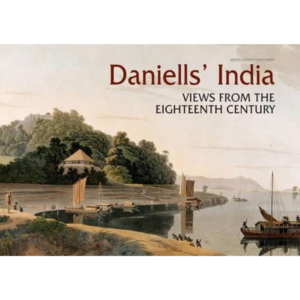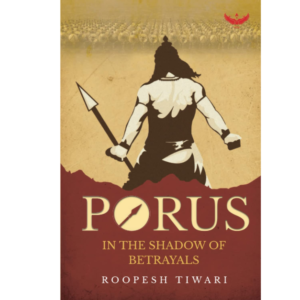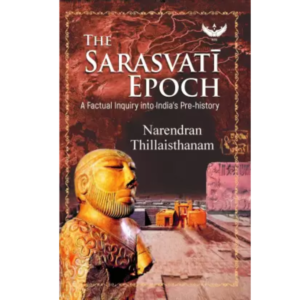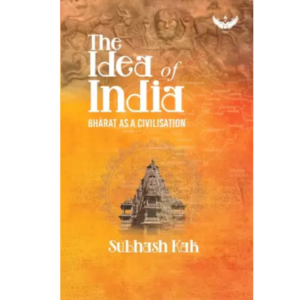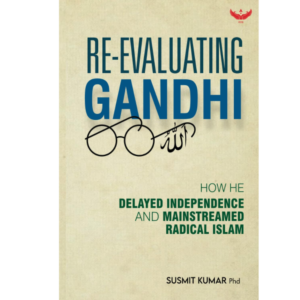FREE SHIPPING WORLDWIDE
Shopping cart (0)
Subtotal: $0.00
Spend $99.00 to get free shipping
Congratulations! You've got free shipping.
Menu
Categories
- Shop
- Arts & Photography
- Biographies
- Business & Money
- Children’s Books
- Comics & Graphic Novels
- Computers & Technology
- Cookbooks, Food & Wine
- Crafts, Hobbies & Home
- Education & Teaching
- Engineering & Transportation
- Fashion
- Health, Fitness & Dieting
- History
- Humor & Entertainment
- Law
- Literature & Fiction
- Medical Books
- Mystery, Thriller & Suspense
- Parenting & Relationships
- Politics & Social Sciences
- Religion & Spirituality
- Romance
- Science & Math
- Science Fiction & Fantasy
- Self – Help
- Sports & Outdoors
- Teen & Young Adult Books
- Text Books
- Travel
- About us
- Contact Us
- Young Adults
- Reference
- Environment
- Test Preparation
- Actions & Adventure
- Research & Publication Guide
- Uncategorized
- Arts & Photography
- Biographies
- Business & Money
- Children's Books
- Comics & Graphic Novels
- Computers & Technology
- Cookbooks, Food & Wine
- Crafts, Hobbies & Home
- Education & Teaching
- Engineering & Transportation
- Fashion
- Health, Fitness & Dieting
- History
- Humor & Entertainment
- Law
- Literature & Fiction
- Medical Books
- Mystery, Thriller & Suspense
- Parenting & Relationships
- Politics & Social Sciences
- Religion & Spirituality
- Romance
- Science & Math
- Science Fiction & Fantasy
- Self - Help
- Sports & Outdoors
- Teen & Young Adult Books
- Text Books
- Travel
We have imported template successfully. To setup it in the correct way please, save this page, refresh and select it in dropdown.
9789350024669, The Historian’s Craft, Bloch Marc, Aakar Books, Paperback, English, Worldwide
$29.10
The Historian's Craft by Marc Bloch is a seminal work that delves into the methods and philosophy of history. Bloch, a renowned historian, explores the role of the historian in interpreting the past, emphasizing the need for critical thinking and objectivity. The book outlines the historian's responsibilities, the importance of evidence, and the challenges of historical writing. Bloch examines how history should be studied, encouraging historians to question assumptions and avoid biases. Written in an accessible style, it remains an essential text for anyone interested in the practice of history. Published by Aakar Books in English.
Add to cart
Add to Compare
9789350024683, Social Evolution, V Gordon Childe (Author), Aakar Books, English, Worldwide
$28.69
"Social Evolution" by V. Gordon Childe explores the development of human societies and cultures through a historical and evolutionary lens. The book examines how social structures, economic systems, and technological advancements have shaped human history. Childe presents a detailed analysis of the transition from primitive societies to more complex civilizations. He delves into the factors driving social change, such as environmental conditions, resource availability, and cultural innovations. The author emphasizes the role of collective human action in shaping societal progress. This work remains a key text for understanding the relationship between human biology, culture, and social evolution.
Add to cart
Add to Compare
9789350024690, Man Makes Himself, V/ Gordon Childe (Author), Aakar Books, Paperback, English, Worldwide
$29.99
Man Makes Himself is the classic introduction to the history of early man. Starting over 340,000 years ago, when man's ability to make a fire and fashion stone tools helped him to survive among the wild beasts, it traces his development as a food producer, the emergence of cities and states, the rise of foreign trade and the urban revolution. V. Gordon Childe was a remarkable man who is considered the father of modern archaeology who specialised in the study of European prehistory. A vocal socialist, Childe accepted the socio-economic theory of Marxism and was an early, though unorthodox, proponent of Marxist archaeology. Childe was the author of several well-known books on the subject of archaeology and prehistory, most notably Man Makes Himself and What Happened in History.
Add to cart
Add to Compare
9789350027103, Beesvi Sadi Me Vishv Itihaas Ke Pramukh Mudde: Badalte Aayam Evam Dishayein, Anirudh Deshpande (Author), AAKAR BOOKS, Hindi, Worldwide
$29.94
"Beesvi Sadi Me Vishv Itihaas Ke Pramukh Mudde: Badalte Aayam Evam Dishayein" by Anirudh Deshpande explores the key issues and changing dynamics in world history during the 20th century. The book discusses major global events, political shifts, and the evolving relationships between nations. It highlights the transformation in economic, social, and cultural paradigms, focusing on the complexities of international relations and conflicts. The author examines the impact of colonialism, the two World Wars, and the rise of global powers, offering a comprehensive analysis of the century's pivotal moments. Written in Hindi, the book serves as an insightful resource for understanding the historical transitions that shaped the modern world.
Add to cart
Add to Compare
9789381523636, Daniells India Views : From The Eighteenth Century, Bn Goswamy (Author), Niyogi Books (Publisher), Hard Bound, English, Worldwide
$100.00
Daniells India Views: From The Eighteenth Century by B.N. Goswamy is a visually captivating exploration of the artwork created by Thomas and William Daniell during their time in India. The book showcases the Daniells' detailed and intricate paintings that provide a historical glimpse into 18th-century India, highlighting landscapes, architecture, and people. Goswamy’s expert commentary adds depth to the visual storytelling, offering insights into the cultural and historical context of the period. The stunning images are complemented by detailed captions, making this a valuable resource for art enthusiasts, historians, and anyone interested in India's colonial art history. Published by Niyogi Books, the hardcover edition is a must-have for collectors and those passionate about Indian art.
Add to cart
Add to Compare
9798885750448, Porus : In the Shadow of Betrayals, Roopesh Tiwari (Author), Garuda Prakashan, Paperback, English, Worldwide
$33.75
"Porus: In the Shadow of Betrayals" by Roopesh Tiwari is the first installment in a planned trilogy that delves into the early lives of Porus, Alexander, and Chandragupta Maurya. Set in 4th century BCE, the narrative explores a volatile India facing internal strife and external threats. King Porus emerges as a formidable leader, challenging Alexander the Great's ambitions. The novel intricately weaves historical events with imaginative storytelling, offering readers a fresh perspective on these iconic figures and their intertwined destinies.
Add to cart
Add to Compare
9798885750479, The Sarasvati Epoch, Thillaisthanam Narendran, Garuda Prakashan Pvt. Ltd, Paperback, English, Worldwide
$31.90
"The Sarasvati Epoch: A Factual Inquiry into India's Pre-history" by Narendran S. Thillaisthanam challenges traditional narratives of Indian history, particularly the Aryan Invasion Theory. Utilizing evidence from genetics, archaeology, geology, and anthropology, the author embarks on a comprehensive journey from the universe's inception to the emergence of human civilization. The book delves into topics such as the formation of Earth, the origins of humanity, and India's earliest cultures, culminating in an exploration of the Sarasvati-Sindhu civilization. Thillaisthanam encourages readers to critically assess mainstream historical accounts and consider a more evidence-based perspective.
Add to cart
Add to Compare
9798885750776, The Idea of India, Kak Subhash, Garuda Prakashan Pvt. Ltd, Paperback, Paperback, English, Worldwide
$32.50
"The Idea of India: Bhārat as a Civilisation" by Subhash Kak is a comprehensive exploration of India's rich cultural and philosophical heritage. The book delves into the essence of what India signifies to its own people and to those in West Asia, offering insights into the nation's enduring civilization. It examines India's sacred geography, the profound significance of pilgrimage, and the foundational concepts of the Vedas and Yoga. Through this work, Kak provides readers with an authentic portrayal of India's identity, challenging prevailing narratives and highlighting the depth of its traditions.
Add to cart
Add to Compare
9798885751841, RECLAIMING MATHURA: Historical Analysis of Krishna Janambhoomi, Manoshi Sinha Rawal, Garuda Prakashan Pvt. Ltd, Paperback, English, Worldwide
$30.63
"Reclaiming Mathura: Historical Analysis of Krishna Janambhoomi" by Manoshi Sinha Rawal delves into the extensive history of Mathura, the revered birthplace of Lord Krishna. The book examines the city's evolution from ancient times to the present, highlighting its cultural, religious, and historical significance. It also addresses the challenges Mathura has faced over the centuries, including invasions and socio-political changes, and discusses ongoing efforts to preserve and reclaim its heritage.
Add to cart
Add to Compare
Product categories
- Actions & Adventure (1)
- Arts & Photography (3)
- Graphic & Novels (1)
- Biographies (7)
- Business & Money (13)
- Children's Books (5)
- Comics & Graphic Novels (4)
- Computers & Technology (15)
- Cookbooks, Food & Wine (2)
- Crafts, Hobbies & Home (1)
- Education & Teaching (40)
- Engineering & Transportation (19)
- Environment (3)
- Fashion (1)
- Health, Fitness & Dieting (3)
- History (18)
- Humor & Entertainment (1)
- Law (0)
- Literature & Fiction (8)
- Medical Books (17)
- Mystery, Thriller & Suspense (2)
- Parenting & Relationships (1)
- Politics & Social Sciences (23)
- Reference (28)
- Language and Grammar (20)
- Words (3)
- Religion & Spirituality (4)
- Research & Publication Guide (4)
- Romance (0)
- Science & Math (33)
- Science Fiction & Fantasy (3)
- Self - Help (4)
- Sports & Outdoors (0)
- Teen & Young Adult Books (2)
- Test Preparation (13)
- Text Books (47)
- Travel (1)
- Uncategorized (0)
- Young Adults (0)





